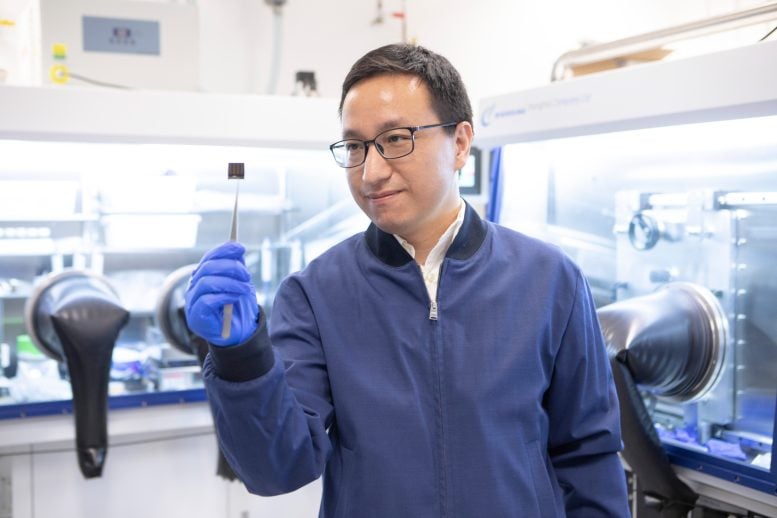
Researchers at HKUST have discovered surface concavities on the crystal grains of perovskite thin films, significantly impacting film properties and reliability. They developed a method to improve the efficiency and stability of perovskite solar cells by eliminating these concavities. This innovation could help overcome the stability issues that currently hinder the commercialization of perovskite solar cells. (Artist’s concept). Credit: SciTechDaily.com
A research team from HKUST has enhanced perovskite solar cell performance by discovering and eliminating surface concavities on the crystal grains of the films, paving the way for greater commercial viability of this promising technology.
A research team from the School of Engineering at the Hong Kong University of Science and Technology (HKUST) has discovered surface concavities on individual crystal grains, the fundamental building blocks of perovskite thin films. They revealed the significant impact of these concavities on the film’s properties and reliability. Based on this fundamental science discovery, the team pioneered a new way of making perovskite solar cells more efficient and stable via a chemo-elimination of these grain surface concavities.
Perovskite solar cells are a stellar solar-cell technology that has demonstrated potential to replace existing silicon solar cells in a wide range of application scenarios, for example, grid electricity, portable power, and space photovoltaics. They not only attain higher power conversion efficiencies (PCEs) than commercial silicon cells, but also offer advantages in terms of low material costs, sustainable manufacturing, and high versatility in transparency and colors. However, the long-term stability of perovskite devices under light, humidity, and thermomechanical conditions remains a hurdle in the commercialization of this promising solar technology.
Research Findings and Innovations
To address this issue, Prof. Zhou Yuanyuan, Associate Professor of the Department of Chemical and Biological Engineering at HKUST, and his research group have conducted fundamental-oriented research from a unique perspective of materials’ microstructure. They discovered a proliferation of surface concavities at the crystalline grains of the perovskite material. These concavities are shown to break the structural continuity at the perovskite film interface, serving as a hidden microstructure factor limiting the efficiency and stability of perovskite cells.

Prof. Zhou Yuanyuan shows a perovskite solar cell. Credit: HKUST
Then, the team took an innovative step to remove the grain surface concavities by using a surfactant molecule, tridecafluorohexane-1-sulfonic SciTechDaily